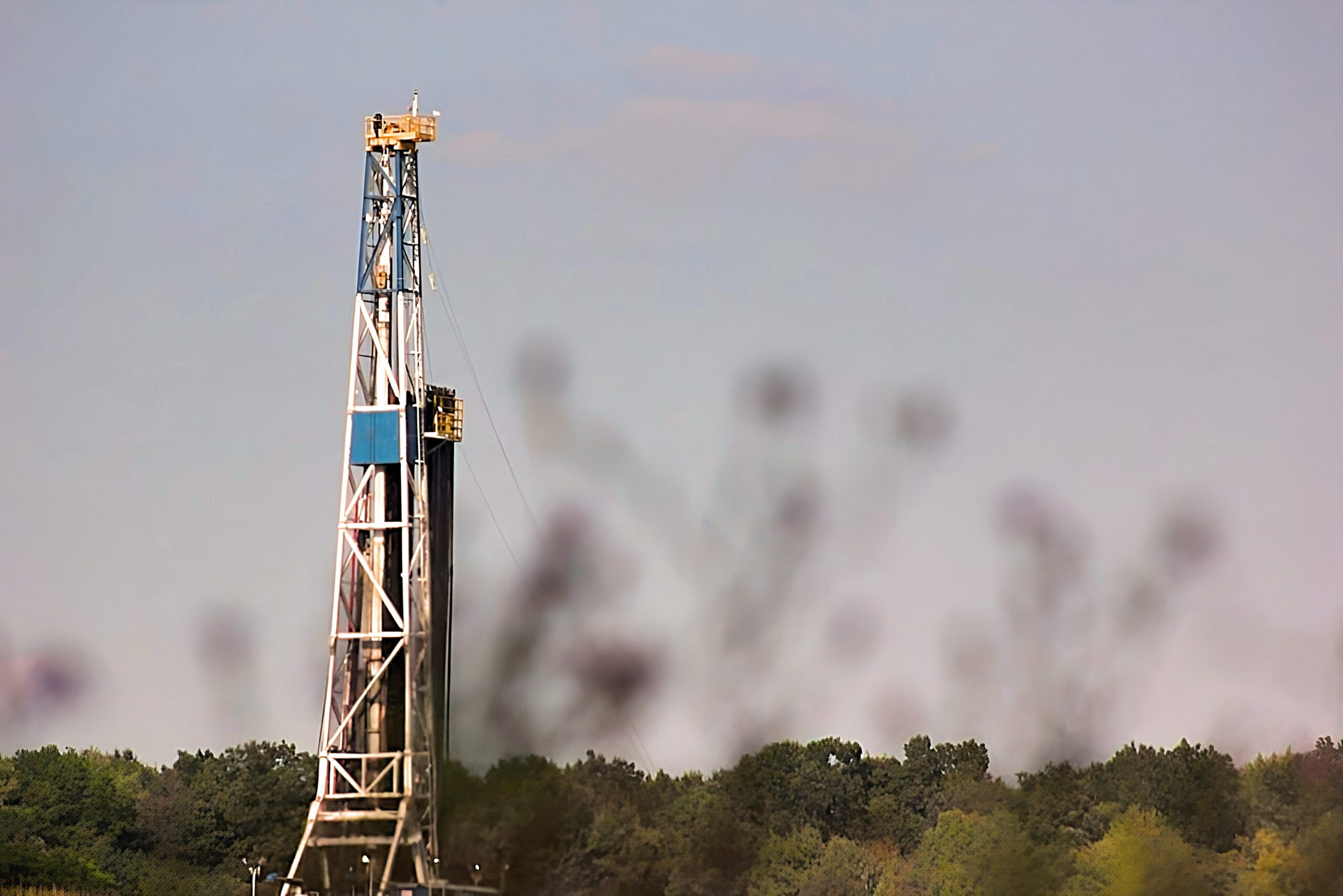What is vinyl chloride and why should you be concerned?
A few weeks ago on February 3, a train carrying hazardous materials, including vinyl chloride, derailed, putting the chemical on the national stage. Residents of nearby town East Palestine, Ohio evacuated over health concerns. A few days later on February 6, the Norfolk Southern Railway Company decided to do a controlled burn, creating a massive smoke plume and more health concerns over the potential release of phosgene, which can be a highly lethal gas that was used as a chemical weapon in World War I.
Vinyl chloride is a colorless manmade gas that is generated from ethane which is found by fracking for natural gas (a fracking rig is pictured above). It’s an essential part of the creation of poly-vinyl chloride (PVC) plastic, which involves a dirty process where lots of chemicals are emitted, exposing workers and those living in nearby communities, who are often lower income and people of color, making it a classic case of environmental racism. PVC is practically unavoidable, being used in pipes, buildings, packaging film, flooring among many other materials.
According to the National Cancer Institute, vinyl chloride is a known human carcinogen and is linked to a rare and deadly form of liver cancer. It’s also linked to regular liver cancer, brain and lung cancers, lymphoma, and leukemia. The concern around the train derailment is that people will inhale it and if it gets into water supplies it can also get inside homes. According to the Ohio EPA no vinyl chloride has been detected in the Ohio River, a major drinking water source.
As of 2021, vinyl chloride is one of the most released chemicals in the country, ranking 117 out of 531 reported chemicals, almost all of which came from the chemical industry. Just five facilities made up over half of these chemical releases, many of which are located in what is called “Cancer Alley” in Louisiana. However, this number is likely an underestimate as not all facilities are required to report chemicals such as vinyl chloride to the EPA.
As it currently stands, more research is needed to determine the health effects on workers and nearby residents, but what we do know is still pretty bad. As part of a more sustainable future, we need to do more to protect fenceline communities and workers who are affected by unsafe chemical exposures, vinyl chloride included.
Written by Sarah Woodams ‘24(T5)
Photo by Brad Weaver on Unsplash

